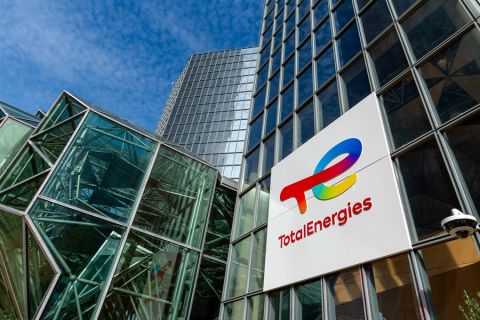Dynamic Pressure Control (DPC) is a managed-pressure drilling (MPD) service to maintain constant bottomhole pressure (CBHP) while drilling. Operators drilling the challenging environments found in mature fields are benefiting from its ability to overcome the pressure limitations of conventional drilling and expand their drillable prospects.
A challenge facing operators drilling mature fields with depleted pressure is the narrow margin between abnormal and depleted pore pressure on one side, fracture gradient on the other, and wellbore stability in between. Past efforts to drill through these types of margins with heavy mud alone proved fruitless and expensive. Recent efforts with DPC successfully reached producing targets in a single run.
Another mature field challenge encountered by operators reentering horizontal wells with coiled tubing (CT) is the high risk of differential sticking caused by high equivalent circulating density (ECD). DPC allowed a
Constant BHP choke systems
Most MPD systems that provide constant BHP include a rotating control head (RCH) while the majority of CBHP systems include a choke connected to it to manage annulus backpressure. Beyond these features choke systems differ from each other by, among other things, the ability to control and create backpressure.
Control can be manual, automated or a mix of both and the ability to create backpressure can be achieved through active or passive control. All choke systems create backpressure while mud is flowing but, without a backpressure pump when flow stops, active control is lost. When that happens backpressure is fixed at the level trapped before flow ceased and the system shifts to passive control to maintain trapped pressure until flow resumes.
 |
|
| Figure 1. The Dynamic Annular Pressure Control System - automated, active back-pressure control and CBHP without well flow. (Graphics courtesy of @Balance) |
No matter how efficiently an operator or system is synchronized to rig pump operation, pressure lost during or after pump shutdown cannot be replaced until the pumps are started again. And no amount of synchronization can control or predict a pump failure, human error or sudden flow loss in an emergency.
One of the most critical times for any drilling operation occurs when the rig pumps are shut down. In some areas of the
A system that includes a pump to create backpressure, continuously, on demand, especially when rig pumps are off, is better equipped to manage CBHP under all circumstances.
DAPC system description
The Dynamic Annular Pressure Control (DAPC) system is an automated choke and pump system designed to control and create backpressure and maintain CBHP continuously throughout drilling operations.
Figure 1 illustrates the DAPC system components — controller, hydraulics model, choke manifold and backpressure pump.
The choke manifold contains three chokes — two redundant main chokes and an auxiliary choke for dynamic backpressure control. Normally, the second main choke is used as a backup but if necessary it can act as the primary or backup pressure relief valve. The auxiliary choke is used to manage backpressure when the backpressure pump is on.
The backpressure pump is a triplex pump under system control and connected to auxiliary choke. The controller turns on the pump whenever it senses flow from the well is insufficient to maintain the required backpressure (e.g. connections and trips).
The hydraulics model calculates the backpressure required for the desired BHP in real-time. It communicates the setpoint to the controller, which operates the chokes and pump to maintain a constant BHP at all times. The model is automatically calibrated to pressure-while-drilling (PWD) data.
A deepwater
 |
|
| Figure 2. Depleted DW GOM well with narrow margin. The DAPC system managed static and dynamic BHP through backpressure control to maintain wellbore stability and eliminate the risk of losing returns at a point A where conventional pressure control failed. |
In previous wells, by the time drilling reached point A (Figure 2) the ECD was 0.8 ppg and the dynamic BHP of 14.2 ppg fractured the formation. The wells collapsed before reaching total depth (TD) and planned oil production was lost. The operator turned to the DAPC system to manage the BHP at the required levels for wellbore stability and avoid lost circulation with a lighter 13.0 ppg mud.
During connections and trips the DAPC system applied 500 psi of backpressure to maintain the static equivalent mud weight (EMW) at 13.7 ppg for wellbore stability (green line in Figure 2). While drilling, backpressure was reduced to maintain dynamic EMW at 13.9. In the zone where losses had occurred in previous wells the system controlled a constant 0.3 ppg margin of safety. The operator successfully drilled to planned TD without incident and reached the producing target.
The DAPC system provided a CBHP solution for a
 |
|
| Figure 3. Constant BHP log from North Sea horizontal well drilled with CT and the DAPC system. BHP held constant during normal rapid flow rate changes. |
Figure 3 illustrates how the DAPC system managed static and dynamic backpressure from pumps-on to pumps-off and maintained constant BHP even when the drilling motor stalled and the pump rate was reduced by as much as 75%. The system demonstrated its ability to respond fast to loss of flow by stabilizing the BHP with no more than 0.02 psi/ft of variation in the downhole EMW (0.57 psi/ft), which represented a 3.5 % change in the desired BHP. System reliability was excellent, accumulating only 1.2% of NPT in 37 days of operation. The operator was able to avoid using an expensive, heavy mud for borehole stability in favor of a lighter mud that eliminated differential sticking and reservoir damage.
Conclusion
The DAPC system is a proven constant BHP solution for operators facing the challenges of heavy mud drilling in mature fields. It has expanded the envelope of drillable wells in depleted fields with pressure margins impossible to drill with conventional drilling techniques; provided access to stranded reserves through existing horizontal production wells using cost-effective CT; enabled operators to use lighter, less expensive and less damaging mud while maintaining stable boreholes and eliminated lost circulation and stuck pipe. The resulting value to oil companies is reduced NPT, reduced drilling cost, and continued production from mature fields.
Recommended Reading
EIG’s MidOcean Closes Purchase of 20% Stake in Peru LNG
2024-04-23 - MidOcean Energy’s deal for SK Earthon’s Peru LNG follows a March deal to purchase Tokyo Gas’ LNG interests in Australia.
TotalEnergies to Acquire Remaining 50% of SapuraOMV
2024-04-22 - TotalEnergies is acquiring the remaining 50% interest of upstream gas operator SapuraOMV, bringing the French company's tab to more than $1.4 billion.
TotalEnergies Cements Oman Partnership with Marsa LNG Project
2024-04-22 - Marsa LNG is expected to start production by first quarter 2028 with TotalEnergies holding 80% interest in the project and Oman National Oil Co. holding 20%.
Is Double Eagle IV the Most Coveted PE-backed Permian E&P Left?
2024-04-22 - Double Eagle IV is quietly adding leases and drilling new oil wells in core parts of the Midland Basin. After a historic run of corporate consolidation, is it the most attractive private equity-backed E&P still standing in the Permian Basin?
Brett: Oil M&A Outlook is Strong, Even With Bifurcation in Valuations
2024-04-18 - Valuations across major basins are experiencing a very divergent bifurcation as value rushes back toward high-quality undeveloped properties.





